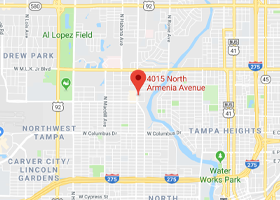With the coming summer rain, our office routinely sees an increase in rear end collisions. Wet roads increase stopping distances. Driver inattention, text messaging and cell phone use only seem to compound the problem.
There are some things you can do to reduce the likelihood of injury, even if you can’t reduce your chances of being rear ended.
The easiest and most important way to reduce injury is to properly adjust your car’s head restraint. It should be two inches above the top of your ear, and approximately two inches from the back of your head. It needs to be high enough to prevent your 12 lb. head from extending over the restraint when struck from behind, and close enough to limit acceleration and movement of your head if your car is hit and suddenly lurches forward.
Seat back position: A driver’s seat is not a barcolounger or lazy-boy. Having the seat as upright as is comfortable will reduce the “ramp” or spring effect it will have on your torso and later head and neck should you be rear ended.
Seat belts: Use them. They’re required by law. There is evidence that they may increase neck injury during low speed collisions, however dental work and head lacerations from striking the steering wheel or windshield easily trump this risk.
Airbags: Airbags do not routinely deploy in rear end types of collisions unless you strike a vehicle in front of you at significant speed.
If you’ve experienced a recent motor vehicle accident without life threatening injuries, ice is your friend. Research demonstrates use of ice 20 minute on and 20 minutes off within a damp towel within the first 24 hours can reduce the duration of an ankle sprain by 50%. I believe this data may be able to be extrapolated to neck and back injuries and often recommend ice use as a preventative measure in those without initial symptoms. It’s rather routine to have symptoms appear days after a motor vehicle accident.
Nick St. Hilaire, D.C.
